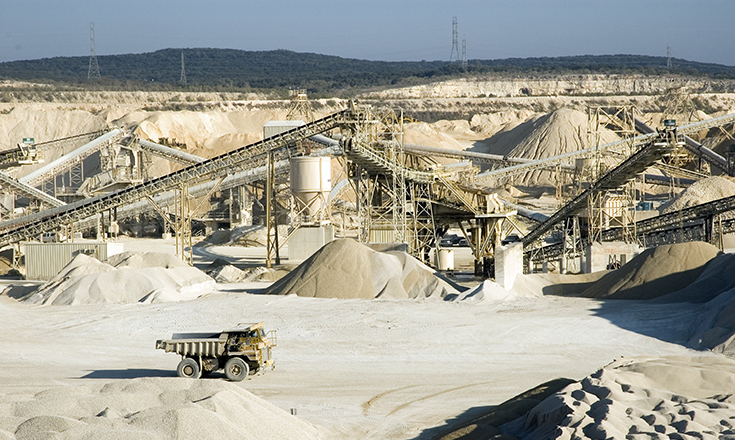
First-quarter aggregate shipments increased 6.6 percent at Martin Marietta, which released its latest financial results Wednesday.
Martin Marietta’s aggregate shipments in the quarter climbed to 39 million tons. Acquisitions contributed to the gain, although the company says challenging weather early this year in the Southeast, Southwest and Midwest factored into the total.
As winter weather eased in March, Martin Marietta says organic aggregate shipments increased by double digits, reflecting underlying strength in key Sun Belt markets.
Pricing momentum continued, as well, with Martin Marietta’s average selling price in aggregates increasing 6.8 percent to $23.77 per ton.
Specific to aggregates, Martin Marietta’s gross profit increased 24 percent in the first quarter to $297 million. Gross margin expanded 260 basis points to 30 percent. The company says both are first-quarter records.
“The first three months are off to a strong start with our teams delivering several first-quarter records, including consolidated gross profit, gross margin, adjusted EBITDA (earnings before interest, tax, depreciation and amortization) and adjusted EBITDA margin,” says Ward Nye, chair and CEO of Martin Marietta. “Aggregates gross profit per ton increased over 16 percent to a new first-quarter record, reflecting continued pricing momentum and effective cost management.
“Additionally, our magnesia specialties business established new quarterly records for revenues, gross profit and gross margin, building upon its record full-year 2024 results,” he adds.
According to Nye, infrastructure demand remains a bright spot amid an uncertain macroeconomic backdrop.
“Construction activity in this countercyclical sector is expected to grow in 2025 as work advances on projects supported by federal and state investments,” he says. “Importantly, with only about one-third of the Infrastructure Investment & Jobs Act (IIJA) funds reimbursed to states through the end of February 2025, we expect IIJA contributions will peak in 2026, followed by a typical tail thereafter.”
Nye says Martin Marietta is already starting to look ahead to the next federal infrastructure bill.
“Early indications are that the successor bill may prioritize programs with national or regional benefits, such as more aggregates-intensive roads, bridges and ports, over local transit, rail and bike/pedestrian trails,” he says.
While private construction markets show promise, Nye indicates that the short-term outlook for projects in the residential segment is less positive.
“Nonresidential construction continues to be led by attractive and growing data center demand and, more recently, warehouse construction appears to have reached a cyclical bottom,” he says. “Importantly, while residential affordability headwinds are not expected to abate in the near term, Martin Marietta’s leading positions in key markets with notable population growth provide attractive opportunities to capitalize on structurally underbuilt markets with pent-up demand when single-family housing construction recovers.”
Related: How Vulcan Materials fared in the first quarter of 2025












